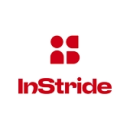Rampant inflation, bloated healthcare costs, wayward hurricanes — a quick perusal of the daily news brings into sharp focus the myriad of reasons nearly 40 percent of Americans rate their mental health as “poor,” according to the American Psychiatric Association.
While employers’ ability to quell glacial ablation and blistering gas prices is limited, they have the opportunity to gift their employees peace of mind in the form of impactful perks and benefits.
And the gesture is cherished, McKinsey recently reported: Professionals favor workplace benefits over higher salaries, four to one.
With healthcare costs projected to balloon by $370 billion over the next four years, the time has come for employers to reimagine employee benefits. Fortunately, insightful companies like GumGum, InStride and Telesign are breaking the mold of traditional perks and listening intently to the evolving needs of their teams.
Built In sat down with HR leaders from the three LA companies, who are dropping superfluous perks and leaning into life-changing benefits like tuition reimbursement, fertility support and mental healthcare — all of which offer genuine satisfaction to employees.
Telesign provides continuous trust to leading global enterprises by connecting, protecting and defending their digital identities.
How do you make sure that you evolve your perks and benefits package to meet what employees need in the moment?
Benefits are fascinating. I remain motivated by their constant evolution and challenging compliance landscape. I attempt to stay current within the industry and our specific market, as well as with up-and-coming concepts through articles, webinars, social circles and so on.
But more importantly, I listen. I’m fortunate in my role to have a direct line with many employees who share their journeys, past and current experiences. Being on a journey of my own, I relate.
I also have visibility into data — benefit-specific census information and utilization, as well as hiring trends, attrition reports and employee life events — that help me to understand the population I’m honored to help provide the right coverage for.
This dynamic combination of intel helps paint a picture of the value that our benefit programs bring and what more we can do to meet the expectations and needs of our talent.
What benefits have you pulled back on over the last year or so? What have you doubled up on?
Wellness offers a mammoth amount of programming, and I believe that there is often too much at the buffet to pick. Wellness is a conversation without titles and tenure, that is focused on meeting each employee where they are and where they’re headed.
We are fortunate to have a fitness reimbursement program that offsets a portion of gym membership costs. With the expanded use of lifestyle savings accounts, I am exploring the potential to support more employees in areas of interest, such as registration fees for a cancer awareness run or walk, consultation costs for a dietitian or nutritionist, positivity training, substance abuse care and more.
I am hopeful that the more ways that an employer can show up to provide coverage for the unexpected, we can break down the silos and stigmas around sensitive topics and band together to provide a greater benefit: compassion and unity.
We can break down the silos and stigmas around sensitive topics and band together to provide a greater benefit: compassion and unity.”
What role does employee feedback play in making sure you’re putting together a relevant perks and benefits package that meets employees’ needs?
The voice of our members — employees and their loved ones also covered by our benefit offerings — is a critical component in our assessments of our partnerships, overall offerings and areas of enhancement.
Benefits professionals want all members to understand their benefits, feel confident in navigating and maximizing, and know that when they have questions, they have access to trusted resources who value their feedback. Every member’s experience is different because every journey is different.
Of course, we like to hear when the process is as expected because it means our programming is working as designed. But we love to hear when our process falls short of expectations — that is where we get to lean in and improve.
InStride helps transform businesses and create social impact by unlocking the power of workforce education.
How do you make sure that you evolve your perks and benefits package to meet what employees need in the moment?
We don’t know what InStriders need and what their experiences are unless we ask, so we are constantly asking InStriders for feedback. We ask specific questions about desired benefits in our annual engagement survey and provide more survey opportunities throughout the year.
It’s important that we listen to our employees. We’ve recently created an experience-share platform where employees can publicly share their experiences using our benefits plans and partners in our all-hands meeting or our company newsletter.
This forum builds awareness and energy around our benefits offerings and helps to call out our blind spots. We also want to hear about how we can do better, so constructive feedback is also encouraged.

What benefits have you pulled back on over the last year or so? What have you doubled up on?
InStride has been very fortunate that we haven’t had to cut any major benefits since we were founded. This year we were actually able to increase the employer-cost share for our healthcare premiums — all of our employees pay less in monthly premiums than they did last year.
We were thrilled to be able to pass savings onto our InStriders. Additionally, we’ve added four new wellness partners that provide care for caregivers and mental well-being. The education programs that we offer to our 40-plus corporate partners are also offered to our employees.
InStride covers 100 percent of tuition upfront so InStriders can pursue their education goals. We’ve seen a 10 percent increase in participation in Step Forward, our higher education program, since January. That’s truly incredible and the program can only become more impactful.
InStride covers 100 percent of tuition upfront so InStriders can pursue their education goals.”
What role does employee feedback play in making sure you’re putting together a relevant perks and benefits package that meets employees’ needs?
Employee feedback is the most important part. Before we start shopping for vendors or comparing costs, we ask InStriders what would support them.
As our company has grown, our employees’ needs have evolved. During the pandemic, we understood that families were at home together for the majority of the day. We implemented a child and eldercare benefit where InStride subsidizes caregiving hours for InStride families.
The offering is one of our most utilized benefits. We also know that we have a vastly different work environment than we used to. We implemented a $1,000 wellness benefit so employees can make the most of their home office or subscribe to a wellness studio. This year we added eldercare benefits to the mix since many InStriders are helping care for aging parents.
We made sure to offer high-quality healthcare plans when we first started as a company, and each year we’ve added benefits to reflect the needs of our employees. If we start to hear that there’s a benefit that is difficult to use, or if we see that people aren’t taking advantage of an available benefit, we’ll start asking questions to figure out how to improve things.
GumGum is a contextual-first, global digital advertising platform that uses advanced AI technology to serve captivating creative ads that drive consumer attention, without the use of personal data.
How do you make sure that you evolve your perks and benefits package to meet what employees need in the moment?
The answer to this question comes in through two different avenues: The first is external benchmarking. Our team keeps up with industry trends by reviewing external benchmarking provided through benefit brokers via surveys and anecdotes, our networks and by attending seminars. These approaches help us keep a well-rounded perspective on the areas of opportunities for us. We incorporate these data points into our annual analysis prior to US Open Enrollment. Keeping up to date with business, wellness, safety and economic factors is also key.
Keeping up to date with business, wellness, safety and economic factors is also key.”
Second, we utilize internal data. We analyze internal survey results such as exit feedback and quarterly pulse survey results to assess the needs of our current team. The findings from these surveys help us either confirm or omit what we are seeing with our external benchmarking. We also look at how demographics have changed to ensure we are targeting the correct benefits and perks for all of our global team members.
What benefits have you pulled back on over the last year or so? What have you doubled up on?
We haven’t pulled back, but we haven’t enhanced student loan assistance. Due to federal legislation, there was low active participation since loans were being deferred. This meant we weren’t looking to increase our monthly employer contributions.
We’ve doubled up on family fertility, childcare, specific medical, dental and vision plans, time-off policies, voluntary time off, DEIB and sustainability, bereavement, pet bereavement, basic life insurance, wellness, and work-from-home stipends.











